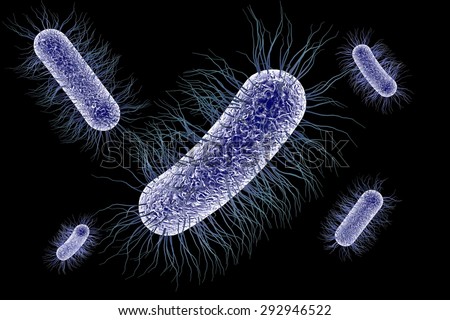PENGARUH OZONE PADA BAKTERI KHUSUS, VIRUS DAN CETAKAN

Bakteri adalah mikroba, makhluk sel tunggal yang memiliki struktur primitif. Tubuh bakteri disegel oleh membran sel yang relatif padat. Ozon mengganggu metabolisme sel-bakteri, kemungkinan besar melalui penghambatan dan memblokir operasi sistem kendali enzimatik. Sejumlah ozon yang cukup melalui membran sel, dan ini mengarah pada penghancuran bakteri.
Virus kecil, partikel independen, terbuat dari kristal dan makromolekul, Tidak seperti bakteri, mereka berkembang biak hanya di dalam sel inang. Mereka mengubah protein sel inang menjadi protein mereka sendiri. Ozon menghancurkan virus dengan menyebar melalui lapisan protein ke inti asam nukleat, yang mengakibatkan kerusakan RNA virus. Pada konsentrasi yang lebih tinggi, ozon menghancurkan kapsid, atau cangkang protein eksterior dengan oksidasi sehingga DNA (deoxyribonucleic acid), atau RNA (ribonucleic acid) struktur mikroorganisme terpengaruh.
1-mg/l = 1-PPM
| Pathogen | Dosage |
| Aspergillus Niger (Black Mount) | Destroyed by 1.5 to 2 mg/I |
| Bacillus Bacteria | Destroyed by 0.2 m/I within 30 seconds |
| Bacillus Anthracis (causes anthrax in sheep, cattle and pigs. Also a human pathogen) | Ozone susceptible |
| Bacillus cereus | 99% destruction after 5-min at 0.12 mg/l in water |
| B. cereus (spores) | 99% destruction after 5-min at 2.3 mg/l in water |
| Bacillus subtilis | 90% reduction at 0.10-PPM for 33 minutes |
| Bacteriophage f2 | 99.99% destruction at 0.41 mg/l for 10-seconds in water |
| Botrytis cinerea | 3.8 mg/l for 2 minutes |
| c. difficile | 99.999% destruction at 0.6 mg/l for 2 minutes (in water) |
| Candida Bacteria | Ozone susceptible |
| Clavibacter michiganense | 99.99% destruction at 1.1 mg/l for 5 minutes |
| Cladosporium | 90% reduction at 0.10-PPM for 12.1 minutes |
| Clostridium Bacteria | Ozone susceptible |
| Clostridium Botulinum Spores. Its toxin paralyses the central nerve system, being a poison multiplying in food and meals. | 0.4 to 0.5 mg/l threshold value |
| Coxsackie Virus A9 | 95% destruction at 0.035 mg/l for 10-seconds in water |
| Coxsackie Virus B5 | 99.99% destruction at 0.4 mg/l for 2.5-minutes in sludge effluent |
| Diphtheria Pathogen | Destroyed by 1.5 to 2 mg/l |
| Eberth Bacillus (Typhus abdomanalis). Spreads typically by aqueous infection and causes typhoid. | Destroyed by 1.5 to 2 mg/l |
| Echo Virus 29: The virus most sensitive to ozone. | After a contact time of 1 minute at 1 mg/l of ozone, 99.999% killed. |
| Enteric virus | 95% destruction at 4.1 mg/l for 29 minutes in raw wastewater |
| Escherichia Coli Bacteria (from feces) | Destroyed by 0.2 mg/l within 30 seconds in air |
| E-coli (in clean water) | 99.99% destruction at 0.25 mg/l for 1.6 minutes |
| E-coli (in wastewater) | 99.9% destruction at 2.2 mg/l for 19 minutes |
| Encephalomyocarditis Virus | Destroyed to zero level in less than 30 seconds with 0.1 to 0.8 mg/l. |
| Endamoebic Cysts Bacteria | Ozone susceptible |
| Enterovirus Virus | Destroyed to zero level in less than 30 seconds with 0.1 to 0.8 mg/l. |
| Fusarium oxysporum f.sp. lycopersici | 1.1 mg/l for 10 minutes |
| Fusarium oxysporum f.sp. melonogea | 99.99 % destruction at 1.1 mg/l for 20 minutes |
| GDVII Virus | Destroyed to zero level in less than 30 seconds with 0.1 to 0.8 mg/l. |
| Hepatitis A virus | 99.5% reduction at 0.25 mg/l for 2-seconds in a phosphate buffer |
| Herpes Virus | Destroyed to zero level in less than 30 seconds wit 0.1 to 0.8 mg/l. |
| Influenza Virus | 0.4 to 0.5 mg/l threshold value |
| Klebs-Loffler Bacillus | Destroyed by 1.5 to 2 mg/l |
| Legionella pneumophila | 99.99% destruction at 0.32 mg/l for 20 minutes in distilled water |
| Luminescent Basidiomycetes (species having no melanin pigment). | Destroyed in 10 minutes at 100-PPM |
| Mucor piriformis | 3.8 mg/l for 2 minutes |
| Mycobacterium avium | 99.9% with a CT value of 0.17 in water(scientifically reviewed document) |
| Mycobacterium foruitum | 90% destruction at 0.25 mg/l for 1.6 minutes in water |
| Penicillium Bacteria | Ozone susceptible |
| Phytophthora parasitica | 3.8 mg/l for 2 minutes |
| Poliomyelitis Virus | 99.99% kill with 0.3 to 0.4 mg/l in 3-4 minutes |
| Poliovirus type 1 | 99.5% destruction at 0.25 mg/l for 1.6 minutes in water |
| Proteus Bacteria | Very susceptible |
| Pseudomonas Bacteria | Very susceptible |
| Rhabdovirus virus | Destroyed to zero level in less than 30 seconds with 0.1 to 0.8 mg/l |
| Salmonella Bacteria | Very susceptible |
| Salmonella typhimurium | 99.99% destruction at 0.25 mg/l for 1.67 minutes in water |
| Schistosoma Bacteria | Very susceptible |
| Staph epidermidis | 90% reduction at 0.1-ppm for 1.7 min |
| Staphylococci | Destroyed by 1.5 to 2.0 mg/l |
| Stomatitis Virus | Destroyed to zero level in less than 30 seconds with 0.1 to 0.8 mg/l |
| Streptococcus Bacteria | Destroyed by 0.2 mg/l within 30 seconds |
| Verticillium dahliae | 99.99 % destruction at 1.1 mg/l for 20 minutes |
| Vesicular Virus | Destroyed to zero level in less than 30 seconds with 0.1 to 0.8 mg/l |
| Virbrio Cholera Bacteria | Very susceptible |
| Vicia Faba progeny | Ozone causes chromosome aberration and its effect is twice that observed by the action of X-rays |
The effect of ozone below a certain critical concentration value is small or zero. Above this level all pathogens are eventually destroyed. This effect is called all-or-none response and the critical level the "threshold value”.



Tidak ada komentar